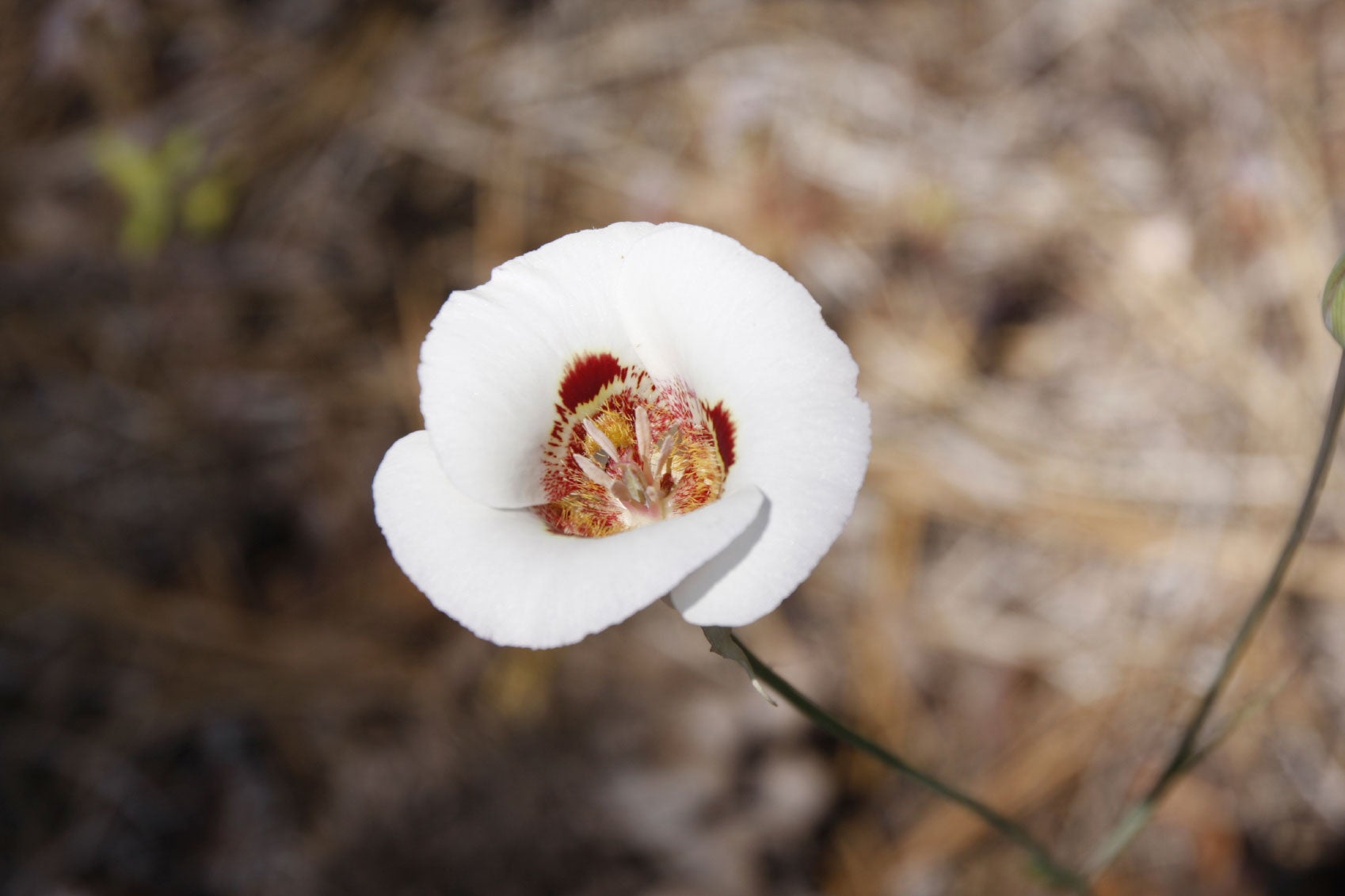Growing Mariposa Lilies: Care Of Calochortus Bulbs


I want to be the person that gets to name plants. For instance, Calochortus lily plants are also called such picturesque names as butterfly tulip, mariposa lily, globe tulip, or star tulip. All very descriptive and appropriate monikers for this broad species of bulb flowers related to lilies. This is a native plant, but seed catalogs and nurseries carry bulbs in their many cultivars. Even the green thumb free novice can easily learn how to grow a Calochortus mariposa plant, with a little instruction and how-to. Calochortus lily plants are found naturally in much of the western hemisphere, with the majority growing in California. They rise from bulbs and produce a flattened version of a tulip with widespread petals that resemble a butterfly. This is the origin of the name Mariposa, which means butterfly in Spanish. In warm to temperate regions, these arresting blooms are an excellent addition to the native garden, borders, and perennial beds, and as summer seasonal color. The varieties available include flowers in hues of lavender, pink, white, yellow, red, and orange.
How to Grow a Calochortus Mariposa Plant
Start with healthy unblemished bulbs when growing mariposa lilies. You may also start them from seed, but don't expect to see any flowers for up to four seasons. Install bulbs in early spring or fall at a depth of 5 inches (13 cm.). Plant them in clusters for a big show or singly as accents to a fuller flower bed. If you choose to use seed, plant them in pots just lightly dusted with seed mix. Keep the pots outdoors in USDA zones 8 or higher and inside in a cool location in colder zones. Mariposa lily care entails that soil must be kept moderately moist but not soggy. Expect germination in February to March if you plant in fall. After a few seasons, transplant the seedlings outside to establish.
Mariposa Lily Care
Fertilize the plants during the growing season with a weak dilution of bulb food from appearance until April or May. Suspend feeding once the tips of the leaves turn yellow. This signals the bulbs' dormancy and will herald flowering. Once the foliage dies back, you can also stop watering until September. Then begin watering again if outside conditions are not sufficiently moist. These bulbs should never be too wet, or they will rot, so make certain drainage is sufficient for in-ground plants and pots alike. In the warmer regions, the bulbs may be left in ground or in pots as long as there is excellent drainage. Cold care of Calochortus bulbs must be taken in other areas. When the foliage is dead, cut it off and dig up the bulb if you wish to overwinter the plant in cooler regions. Let the bulb dry out for at least a week and then place in a paper bag and hold in a dark location where temperatures average 60 to 70 degrees F. (15-21 C.). Plant in early spring after all danger of frost has passed and resume watering until foliage dies back again. Repeat the cycle and you will have mariposa lilies for years to come.
Sign up for the Gardening Know How newsletter today and receive a free copy of our e-book "How to Grow Delicious Tomatoes".

Bonnie Grant is a professional landscaper with a Certification in Urban Gardening. She has been gardening and writing for 15 years. A former professional chef, she has a passion for edible landscaping.